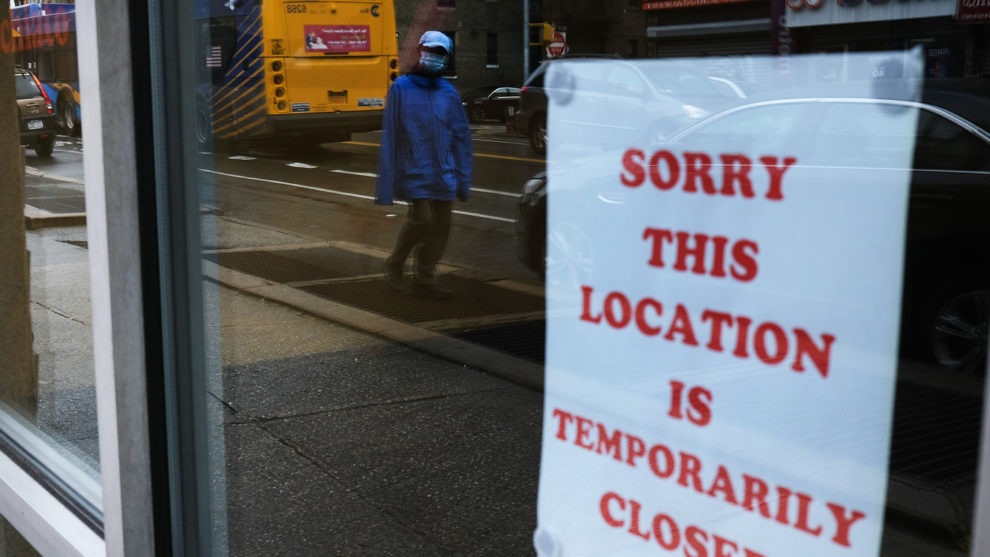
A new loan program for small businesses hurt by the coronavirus crisis has especially helped parts of the country not suffering as much from the pandemic, according to a National Bureau of Economic Research paper released this week.
“We find no evidence that funds flowed to areas that were more adversely affected by the economic effects of the pandemic, as measured by declines in hours worked or business shutdowns,” researchers from the University of Chicago and the Massachusetts Institute of Technology wrote in the paper on the Paycheck Protection Program.
“If anything, we find some suggestive evidence that funds flowed to areas less hard hit.”
The researchers found 15% of establishments in the regions most affected by declines in hours worked and business shutdowns received PPP funding, while 30% of establishments got PPP money in the least affected regions.
This could be “a result of the pre-existing bank relationships across counties, rather than a problem with implementation,” as a major factor was banks showing considerable variation in their participation in the program as lenders, the researchers said. While larger banks in most cases issued more loans than expected given their share of the small-business market, the very largest banks significantly underperformed in PPP lending.
JPMorgan Chase JPM, +1.45% , Bank of America BAC, +2.74% , Wells Fargo WFC, +2.67% and Citibank C, +2.21% in the past have accounted for 36% of small-business lending, but they disbursed less than 3% of all PPP loans, and these banks were “disproportionately located in areas that received less PPP funding,” the academics said.
In a separate analysis earlier this month, Evercore ISI economist Ernie Tedeschi said coastal blue states could be lagging red states in receiving PPP loans in part because of “closer community banking relationships” in states such as Nebraska.
The UChicago and MIT researchers also attributed their findings to the fact that “PPP support is more generous for firms that maintain their payroll,” so “the program likely appealed more to firms with smaller reductions in their business.” PPP loans are forgivable if businesses use the proceeds primarily to retain employees, according to Treasury Department guidelines.
”The evidence suggests the PPP functioned less as social insurance to support the hardest hit areas and more as liquidity support for less affected firms,” the academics said.
The PPP has drawn a range of criticism, with small businesses and their bankers reporting widespread problems in getting the loans during the past month, including delays this week as the program reopened.
Meanwhile, more than 100 public companies disclosed getting the aid, though many of them are giving the money back after an outcry and a May 7 deadline from the Treasury Department for returns.
Democratic Rep. Jackie Speier of California earlier this month said she smelled “a rat” and thought it was “political” as she noted how coastal blue states mostly lagged red states in receiving PPP loans.
House Speaker Nancy Pelosi, also a California Democrat, on Monday suggested that banks making PPP loans shouldn’t get paid more for serving bigger companies. Big banks are facing lawsuits that claim they put larger borrowers first, and some advocates say minority and women owners of businesses are getting shut out of the loan program.
The Trump administration has responded to some criticisms, with Treasury Secretary Steven Mnuchin saying Monday that PPP loans above $2 million will be audited. President Donald Trump is slated to make remarks about the program around 3 p.m. Eastern Time on Tuesday.
The NBER paper, released on Sunday, is titled “Did the Paycheck Protection Program Hit the Target?” Its authors said they studied data on the distribution of PPP loans in the program’s first round along with “high-frequency micro-level employment data.”
The PPP quickly ran through the $350 billion that it received initially through last month’s $2.2 trillion Cares Act, and then on Friday got an additional $320 billion as Trump signed into law the $484 billion Paycheck Protection Program and Health Care Enhancement Act.
U.S. stocks DJIA, +0.47% SPX, +0.31% are trading well below their February peaks because of coronavirus-related lockdowns on business activity, but they have rallied from their late-March lows thanks in part to optimism around Washington’s aid programs. The S&P 500 and Dow closed higher Monday, with analysts giving credit to some lockdowns easing, and the two gauges recently were mixed on Tuesday.
















Add Comment